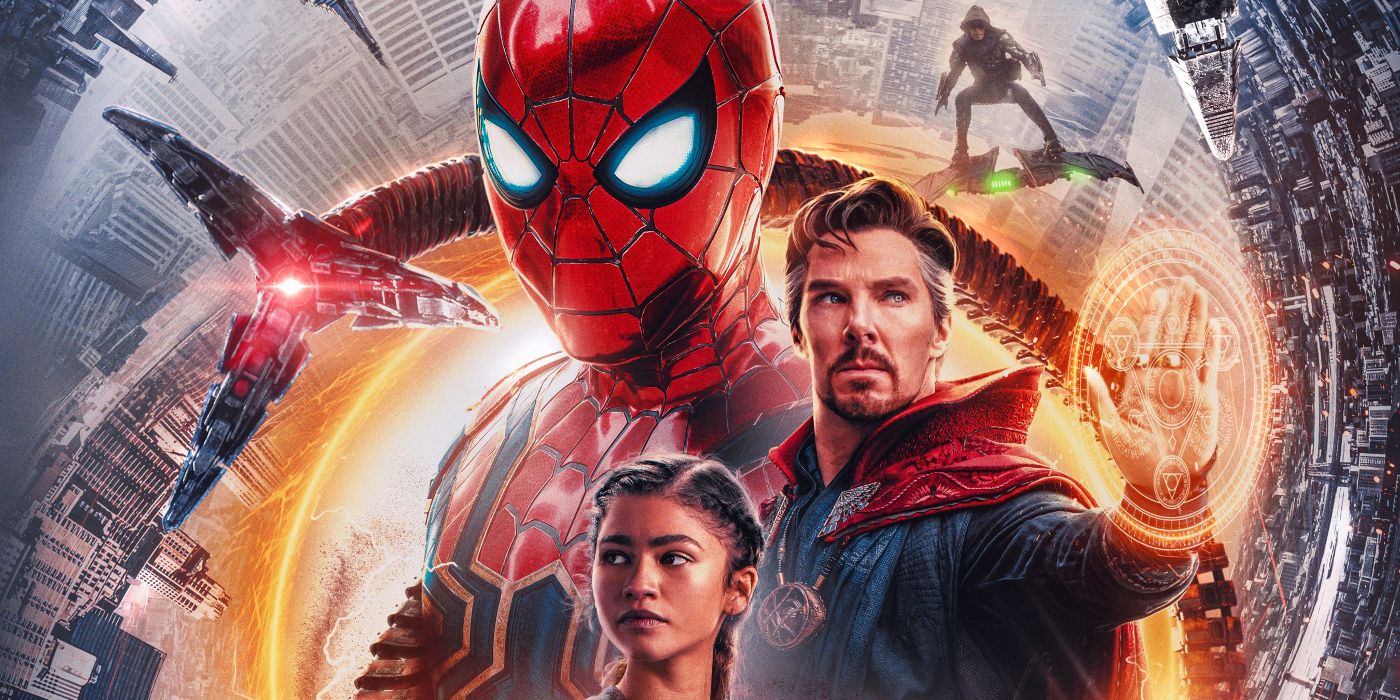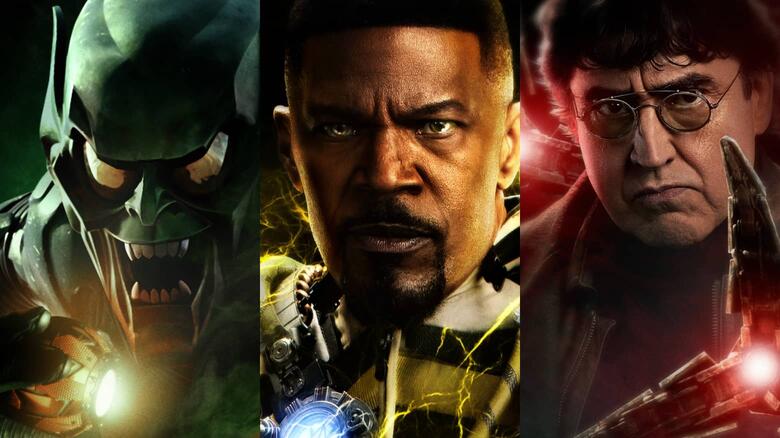In terms of the big screen, 2021 has seen the well-oiled machine of the Marvel Cinematic Universe breaking down. Of the three films released this year under the MCU banner, only Shang-Chi has been worth its weight. Black Widow had promise, but it was a solid C+ at best while Eternals was just shy of being a dud. However, the anticipation of the third installment of the MCU’s Spider-Man franchise gave me some hope. Granted, leaks of the final film had been released in the months leading up to the film’s release, but that only excited me further. Today, I got to see Spider-Man: No Way Home and, let me tell you, it’s a helluva well-written love-letter to Spidey fans.

Title: Spider-Man: No Way Home
Released: December 13th, 2021
Director: Jon Watts
Starring: Tom Holland, Zendaya, Benedict Cumberbatch, Willem Dafoe, Marisa Tomei, & Jon Favreau
PLOT: Picking up several days after the end of Spider-Man: Far From Home (2020), Peter Parker’s identity of Spider-Man has been revealed to the world by reporter J. Jonah Jameson (played by J.K. Simmons), a sensationalist tabloid newscaster. As a result, Peter’s life, and those closest to him, is turned upside-down. His benevolent and incredibly goodly Aunt May (Marisa Tomei) is just coming out of a brief relationship (or “fling”, as she calls it) with Happy Hogan (Jon Favreau); there’s reporters everywhere he now goes (including helicopter choppers right outside his apartment building); a public divided about Spider-Man (some praise him for his heroism, some believe Mysterio was right); but his relationships with his girlfriend MJ Jones-Watson (Zendaya) and his best friend Ned Leeds (Jacob Batalon) are strengthened by this event.
Of course, the U.S. Department of Damage Control (D.O.D.C.) gets involved and their over-enthusiasm forces Peter and Aunt May to go into hiding. Taking refuge in a condo owned by Happy and tech-gifted by the late Tony Stark, Peter begins feeling the weight of responsibility that the revelation of his secret identity is having on his aforementioned friends, who are denied acceptance to M.I.T. due to their guilt-by-association with Parker. So, he turns to his old friend, Dr. Strange (Benedict Cumberbatch), for help. The Sorcerer Supreme no longer has the Eye of Agomotto (the Time Stone), so he can’t undo the event that led to the world knowing Spider-Man’s alter ego. Instead, he offers to mind-wipe the entire world of that knowledge. However, Peter caused several “eyes of the storm” in the spell being cast, attempting to pull MJ, Ned, Aunt May, and Happy Hogan into that eye so that only they would remember his identity.
Not only does the spell not work, but it brings several individuals from alternate parallel Earths into Peter’s: Doctor Octopus, Norman Osborn’s Green Goblin, and the Sandman (respectively Alfred Molina, Willem Dafoe, Thomas Haden Church) from the Sam Raimi Spider-Man universe appear; then Electro and the Lizard (Jamie Foxx and Rhys Ifans) from Marc Webb’s The Amazing Spider-Man universe appear. In the next act, Peter tries to recapture them and have Dr. Strange send them back to their realities, but Peter is just a kid. Meaning, he’s a screw-up. He messes things up and that leads to tragic events, ones that not only lead him to both encountering and forming unusual team-ups, but making choices that have widespread effects on not just his own life, but everyone else’s.
MY TAKE: Where do I start? The antagonist of Spider-Man: Far From Home was a disgruntled tech worker creating special effects and fashioning himself as a villain from an Earth in a fictional parallel reality. Then when we saw J.K. Simmons reprising what we thought was his role as J. Jonah Jameson from the Sam Raimi Spider-Man universe, that showed me that those parallel realities must not be fictional in the Marvel Cinematic Universe. It’s a fact which was given further credence by the events in WandaVision, Loki, What If…?, and the title of the upcoming Dr. Strange sequel. If not for films like 1993’s Last Action Hero, which posited that movies are alternate parallel dimensions in and of themselves with their own set of rules, then Spider-Man: No Way Home wouldn’t exist.
Additionally, if the term “fan service” belongs to any movie, it’s this one. The amount of Easter eggs that were nods to the previous Spider-Man films and franchises were too numerous to list, and many of the character appearances qualify. Charlie Cox was confirmed to be reprising his role as Matt Murdock/Daredevil from the Netflix series of the same name, and here he does just that. Despite contradictory statements from Marvel Studios head Kevin Feige, Cox’s appearance cements the link between the now-defunct Marvel Netflix properties and the MCU. The appearance of the villains was one of the best parts of the films. Each one of them were pulled into the MCU at the moment before their deaths, so they’re naturally confused about being in a world where their versions of Peter Parker don’t exist. Alfred Molina’s Doc Ock and Willem Dafoe’s Green Goblin were classic on-screen villains, and their appearance here elicited applause from the moviegoers. So did Jamie Foxx’s Electro, he gets a serious upgrade here and is a source of the film’s wry humor. Also, it’s important to remember what we learned in Loki about the concept of “variants”.
The acting was well-done. While the Spider-Men of yesteryear (Andrew Garfield and Tobey Maguire) are older and a little more developed, it’s Holland’s Spidey who’s turn it is now. I’ve been saying this ever since his first MCU appearance in Captain America: Civil War (2016): Holland’s Spider-Man is the best on-screen version because he takes his cue from the character’s comic appearances and from the ‘90s animated series on FOX, both of which display him as a sarcastic, motor-mouthed smart-ass, a key characteristic which I thought was missing in the portrayals by Garfield and Maguire. Holland also conveys the character’s sense of responsibility which drives him. The actors behind the villains try to humanize them. Four out of five of them are scientists with deep-rooted psychological issues that led them to embrace villainy and, speaking of which, Ned Leeds. In the MCU, he’s Peter Parker’s overweight best-friend of Flilpino descent. In the comics, Leeds is a White guy who becomes the third man to assume the villainous Hobgoblin identity, a fact which is humorously teased in the film, as was the future appearance of Miles Morales, though not mentioned by name.
It’s also interesting how the film incorporated plot elements from the storyline “One More Day”, in which Spider-Man made a deal with Mephisto to get his secret identity to be secret again after the events in Civil War and, as a result, save the life of Aunt May who had been shot by agents of the Kingpin trying to kill Peter. The identity was the bargain, his marriage to Mary Jane was Mephisto’s price. Also, the visuals in the film were fantastic, especially the sequence involving Dr. Strange chasing Peter throughout dimensions, and the cinematography of his fight scenes were great, especially the bridge fight against Doc Ock. Holland’s and Cumberbatch’s interactions were fun, as the annoying kid with the dry-humored sorcerer. Lastly, there are two scenes (mid- and post-credit) which will have far-reaching implications for the MCU throughout Phase Four.
In conclusion, this was one of the best films of the year and of the four MCU films released in 2021, this was the best one. It’s been said that while Tom Holland will be reprising his role as Spider-Man, there will be no more MCU Spider-Man films, but the ending of this film was a good way for the trilogy to go out on top. It gave us fans a complete reminder of why we love the MCU in a way that the other three 2021 MCU films just didn’t: Fan-service, faithfulness to the source material, no half-assed acting, and solid plots that keep us coming back for more. The theme of “home” is been prevalent in the entire MCU Spider-Man trilogy. Well, let me be the first to say that Spider-Man: No Way Home is most certainly a HOME-run.



